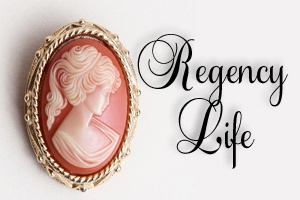A look at Regency dancing, part 2

In addition to the country dance, reel, cotillion and quadrille, several other dances might be found at a Regency ball or assembly.
The minuet was a hold over from the prior century and required special dress and training. Old fashioned, formal balls would open with couples doing the minute, one at a time. This practice fell out of fashion in the early 1800’s.
Napoleonic Ball – Menuet
During the 1700’s, English country dances spread to France. French dancers added court dance steps to English dances and contra-dance was born.
Napoleonic Ball – Contredanse Française
Napoleonic Ball – Contredanse Anglaise 3
The Écossaise is a type of contra dance in a Scottish style usually danced in 2/4 time.
Ecossaise
You can find my first look at Regency Dances here.
 Some of you have asked about how couples could converse or even interact on the dance floor after looking at some of these dances. My husband, youngest son, and I have recently taken up English Country dance, and after two balls, I’d love to offer some insights from the ballroom floor. Tune in next month!
Some of you have asked about how couples could converse or even interact on the dance floor after looking at some of these dances. My husband, youngest son, and I have recently taken up English Country dance, and after two balls, I’d love to offer some insights from the ballroom floor. Tune in next month!

We don’t really know what was still being danced. One report did say that King george III and Queen Charlotte continued to open balls at court with the minuet . A report of what was danced at Almacks’ comes mainly from Gronow who wrote fifty years later and whose memory wasn’t as clear on the details as one would like. The minuet had lost popularity at the more public assemblies as more of the public could afford to attebnd but couldn’t afford to learn the minuet.. I will have to scheck to see if Thos. Wilson includes any minuets in his 1816 book.
I once was a guest at a Royal Scottish Dance society meeting and tried one of the dances. I gave two left feet so I applaud the good nature of the others in the set. It was a vigorous dance. They generally tried to use the
Some sources say that the minuet was danced at court until Queen Charlotte died. It would have been in keeping with those horrible caged skirts she insisted on.
It is difficult to know exactly what was danced at private dances or Almacks’ . Many accounts are based on what Gronow thought he remembered fifty years after the event when he was never allowed in Almacks’ in the first place.
The minuet probably fell out of favor at the more public assemblies as there were more who could afford to attend the assembly who couldn’t afford to learn the minuet or had no interest in it.
I can’t remember if Thos. Wilson even mentions minuets in his dance book of 1816.
Thanks so much for the additional insight Nancy!
Please excuse what seems a duplicate message above. I thought the first message had been deleted so repeated it.
Pingback:Assembly Rooms, May 2015 » The Beau Monde